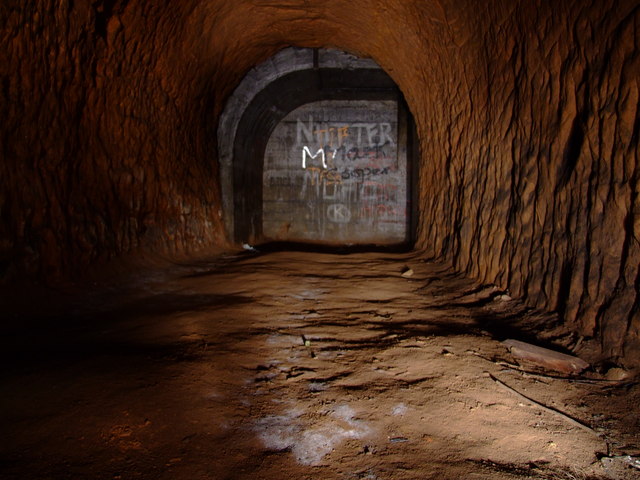Stockport Air Raid Shelters on:
[Wikipedia]
[Google]
[Amazon]
 The Stockport Air Raid Shelters are a system of almost 1 mile of underground air-raid shelters dug under Stockport, six miles south of Manchester, during
The Stockport Air Raid Shelters are a system of almost 1 mile of underground air-raid shelters dug under Stockport, six miles south of Manchester, during
Detailed historical record about Stockport Air Raid Shelters
Detailed article on the shelter system, including underground photographs of the disused shelters
{{coord, 53.4098, -2.1608, display=title, region:GB, format=dms Subterranea of the United Kingdom Air raid shelters in the United Kingdom Museums in Greater Manchester History museums in Greater Manchester Military and war museums in England World War II museums in the United Kingdom Tourist attractions in the Metropolitan Borough of Stockport Buildings and structures in Stockport
 The Stockport Air Raid Shelters are a system of almost 1 mile of underground air-raid shelters dug under Stockport, six miles south of Manchester, during
The Stockport Air Raid Shelters are a system of almost 1 mile of underground air-raid shelters dug under Stockport, six miles south of Manchester, during World War II
World War II or the Second World War, often abbreviated as WWII or WW2, was a world war that lasted from 1939 to 1945. It involved the vast majority of the world's countries—including all of the great powers—forming two opposing ...
to protect local inhabitants during air raids.
Four sets of underground air raid shelter tunnels for civilian use were dug into the red sandstone
Sandstone is a clastic sedimentary rock composed mainly of sand-sized (0.0625 to 2 mm) silicate grains. Sandstones comprise about 20–25% of all sedimentary rocks.
Most sandstone is composed of quartz or feldspar (both silicates ...
rock below the town centre. Preparation started in September 1938 and the first set of shelters was opened on 28 October 1939; Stockport was not bombed until 11 October 1940. The smallest of the tunnel shelters could accommodate 2,000 people and the largest 3,850. It was subsequently expanded to take up to 6,500 people.
In 1948, the shelters were sealed off from the public.
The largest of the Stockport Air Raid Shelters have been open to the public since 1996 as part of the town's museum service.
Tunnels
Brinksway
The Brinksway shelter inEdgeley
Edgeley is a suburb of Stockport, Greater Manchester, England.
Edgeley is characterised largely by Victorian terraced housing around Alexandra Park. The population in 2011 was 14,176.
Edgeley Park is home to Stockport County F.C.
History
R ...
had a capacity for 1,085 bunks and 1,735 seats.
The excavations for the shelter expanded upon the 17th-century Brinksway Caves, which had previously been used as a shelter by navvies
Navvy, a clipping of navigator ( UK) or navigational engineer ( US), is particularly applied to describe the manual labourers working on major civil engineering projects and occasionally (in North America) to refer to mechanical shovels and ea ...
working on the Stockport Viaduct
Stockport Viaduct carries the West Coast Main Line across the valley of the River Mersey in Stockport, Greater Manchester, England (). It is one of the largest brick structures in the United Kingdom and a major structure of the early railway age ...
.
Chestergate
The Chestergate Shelter is the largest and most well known of the shelters, originally able accommodate 3,850 people before an expansion doubled the capacity to 6,500. The shelter was formally opened on 28 October 1939 by the Mayoress of Stockport. Due to the 'luxurious' amenities such as 16-seaterchemical toilet
A chemical toilet collects human excreta in a holding tank and uses chemicals to minimize odors. They do not require a connection to a water supply and are used in a variety of situations. These toilets are usually, but not always, self-containe ...
s, electric lighting and a canteen, the shelter was dubbed by locals as the 'Chestergate hotel'.
The shelter was opened to the public in 1996 as a museum. In 2014, Stockport Metropolitan Borough Council
Stockport Metropolitan Borough Council is the local authority for the Metropolitan Borough of Stockport, Greater Manchester, England. The council is currently run by a Liberal Democrat minority administration. At the 2022 local elections, the ...
announced plans to cut funding to the museum and place it under an independent trust. In 2019, several staff were placed on redundancy notice, with plans announced to cut opening hours the following year. The cut in opening hours and the installation of admissions charges were set to go ahead in April 2020.
Dodge Hill
The Dodge Hill shelter inHeaton Norris
Heaton Norris is a suburb of the Metropolitan Borough of Stockport, Greater Manchester, England. It is part of the Four Heatons, and neighbours Heaton Chapel, Heaton Mersey and Heaton Moor. Within the boundaries of the historic county of Lanca ...
had a capacity for around 2,000 people.
In 2013, two youths became trapped in the tunnels for over three hours, resulting in over twenty firefighters and seven emergency vehicles attending to rescue them. The following year, over thirty five firefighters arrived to extinguish a fire possibly ignited by rough sleepers.
Fiction and media
The air raid shelters were depicted in Geraldine O'Neills 2020 book ''The Nightingales in Mersey Square'', written under the pen name Lilly Robbins. The book centred around two trainee nurses during the arrival of 1,200 evacuees from Guernsey. During her research for the book, O'Neill visited the Stockport Air Raid Shelters in order to ensure the work was authentic.References
External links
Detailed historical record about Stockport Air Raid Shelters
Detailed article on the shelter system, including underground photographs of the disused shelters
{{coord, 53.4098, -2.1608, display=title, region:GB, format=dms Subterranea of the United Kingdom Air raid shelters in the United Kingdom Museums in Greater Manchester History museums in Greater Manchester Military and war museums in England World War II museums in the United Kingdom Tourist attractions in the Metropolitan Borough of Stockport Buildings and structures in Stockport